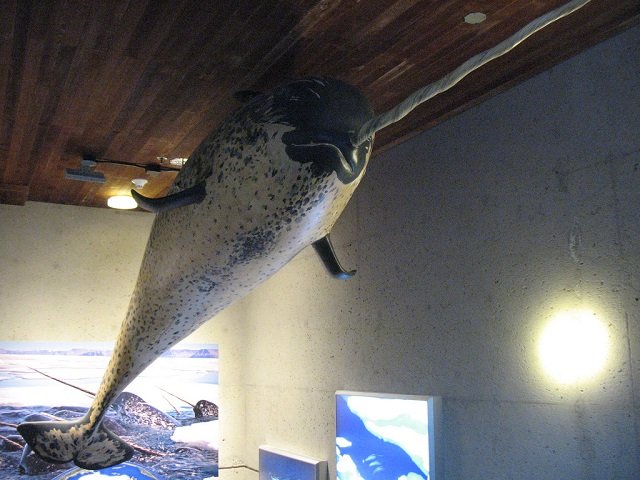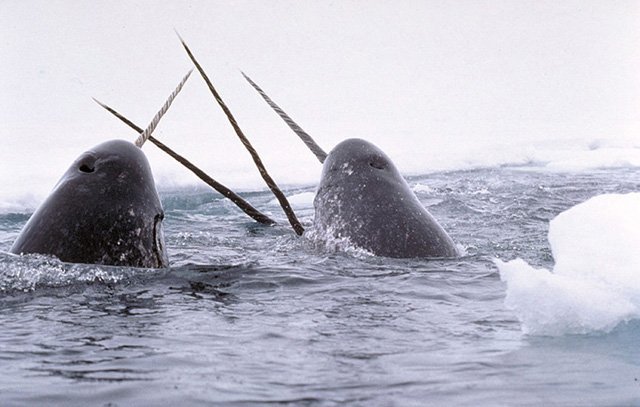The Arctic Ocean is filled with amazing creatures that have the ability to survive in the coldest conditions. However, as the climate warms up and the sea ice melts, the Arctic Ocean can be a dangerous place for many arctic species, including narwhals.

Narwhals are medium sized whales that live in packs of two to ten individuals. They are best known for the massive ivory tusk, which can grow to 150 cm to 267 cm long! They also happen to be one of the most sensitive Arctic marine mammals to climate change.

The dramatic temperature swings caused by climate change not only lead to sea ice loss but also flash freezing. In some cases, a herd of narwhals will come up for air through tunnels in the ice, only to have the tunnels freeze shut behind them. The narwhals become stranded and are at a higher risk of being hunted by humans for their prized tusk.
Getting trapped in the ice isn’t the only issue narwhals face due to climate change. As the ice continues to melt, human presence increases. This means more hunting and development in the narwhal’s habitat, along with more boat activity as shipping and oil exploration increase.
Currently, narwhals are a species of special concern in Canada and near threatened internationally.

Sources:
http://www.sararegistry.gc.ca/virtual_sara/files/cosewic/sr_narwhal_e.pdf
http://www.arkive.org/narwhal/monodon-monoceros/
http://www.iucnredlist.org/details/13704/0




That’s sooo sad!!! Narwhals are one of my favourite animals! Why does flash freezing occur when the temperature is rising?
Great question, Froggypog! While the global temperature is rising, at smaller scales it’s a little more complex. The temperature is going up in some regions, but cooling in others.
As for the flash freezing, there could be a couple of reasons:
– rises in oceanic water temperatures has caused the flow of water to change. This means that warm water is reaching areas that were once cold, and cold water is reaching areas that were once warm.
– changes in the concentration of salt in the ocean water. As the salt levels go down, the water freezes faster.
Save the narwhals!
Awww so sad 🙁 🙁 🙁 🙁 🙁
How come the narwhals cant survive in warm climates
Because they where made to adapt to the cold. So when it becomes warm, it’s bad..
when the narwhals tusk forms does it hurt the narwhal?
I don’t think so.
SAVE THEM!!!!!!!!!!!!!!!!!!!!!!!!!!!!!!!!!!!!! NOW!!!!!!!!!!!!!!!!!!!!!!!!!!!!!!!!!!!
I wish i could help.
narwhal’s are so cool,they have that horn on there forehead and they liv where it is super cold,but I don’t think they live by polar bears and penguins,what could not be cool about them. <3<3<3
Pour narwhals iam going to cry.